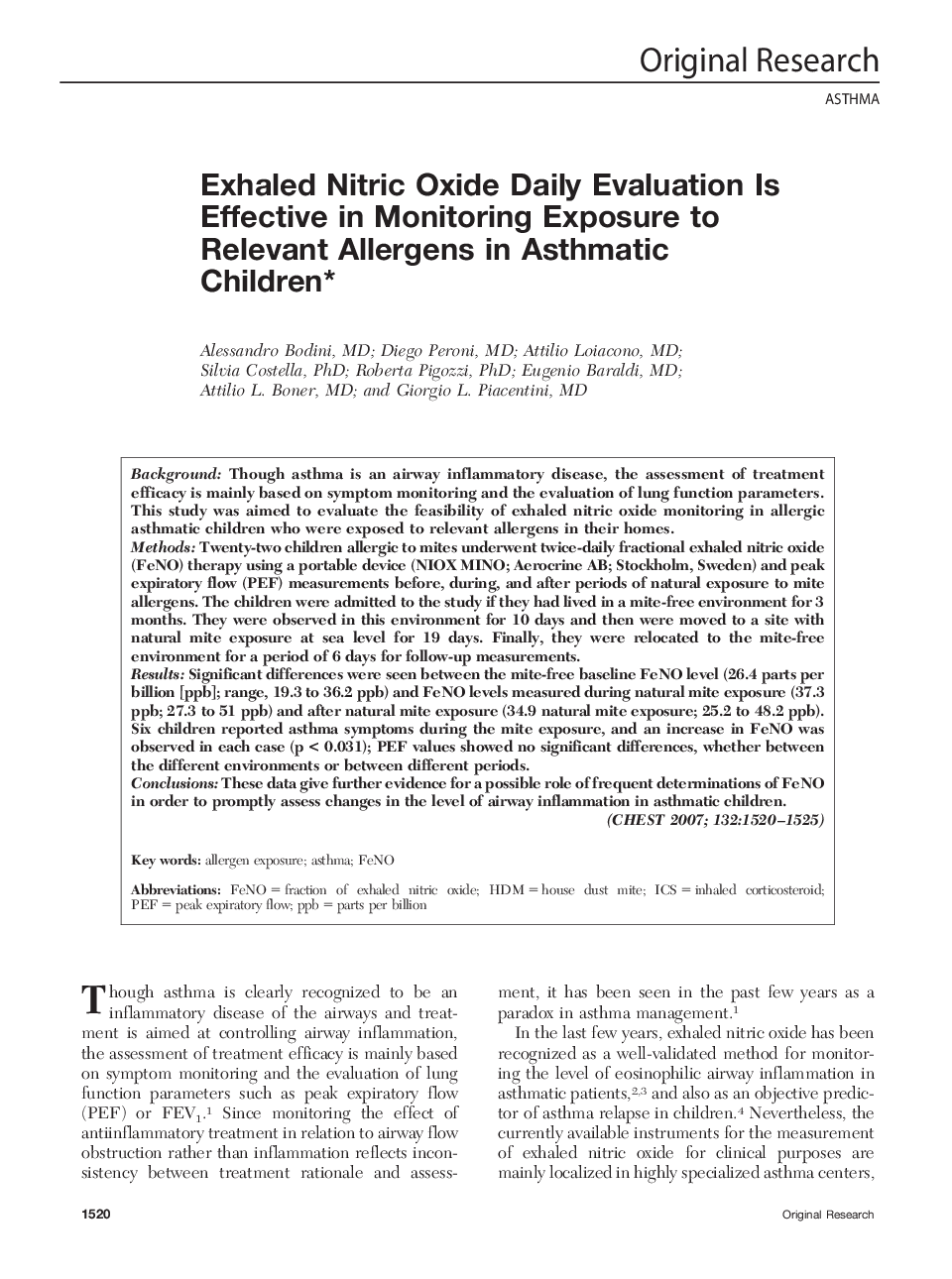| Article ID | Journal | Published Year | Pages | File Type |
|---|---|---|---|---|
| 2904427 | Chest | 2007 | 6 Pages |
BackgroundThough asthma is an airway inflammatory disease, the assessment of treatment efficacy is mainly based on symptom monitoring and the evaluation of lung function parameters. This study was aimed to evaluate the feasibility of exhaled nitric oxide monitoring in allergic asthmatic children who were exposed to relevant allergens in their homes.MethodsTwenty-two children allergic to mites underwent twice-daily fractional exhaled nitric oxide (FeNO) therapy using a portable device (NIOX MINO; Aerocrine AB; Stockholm, Sweden) and peak expiratory flow (PEF) measurements before, during, and after periods of natural exposure to mite allergens. The children were admitted to the study if they had lived in a mite-free environment for 3 months. They were observed in this environment for 10 days and then were moved to a site with natural mite exposure at sea level for 19 days. Finally, they were relocated to the mite-free environment for a period of 6 days for follow-up measurements.ResultsSignificant differences were seen between the mite-free baseline FeNO level (26.4 parts per billion [ppb]; range, 19.3 to 36.2 ppb) and FeNO levels measured during natural mite exposure (37.3 ppb; 27.3 to 51 ppb) and after natural mite exposure (34.9 natural mite exposure; 25.2 to 48.2 ppb). Six children reported asthma symptoms during the mite exposure, and an increase in FeNO was observed in each case (p < 0.031); PEF values showed no significant differences, whether between the different environments or between different periods.ConclusionsThese data give further evidence for a possible role of frequent determinations of FeNO in order to promptly assess changes in the level of airway inflammation in asthmatic children.
